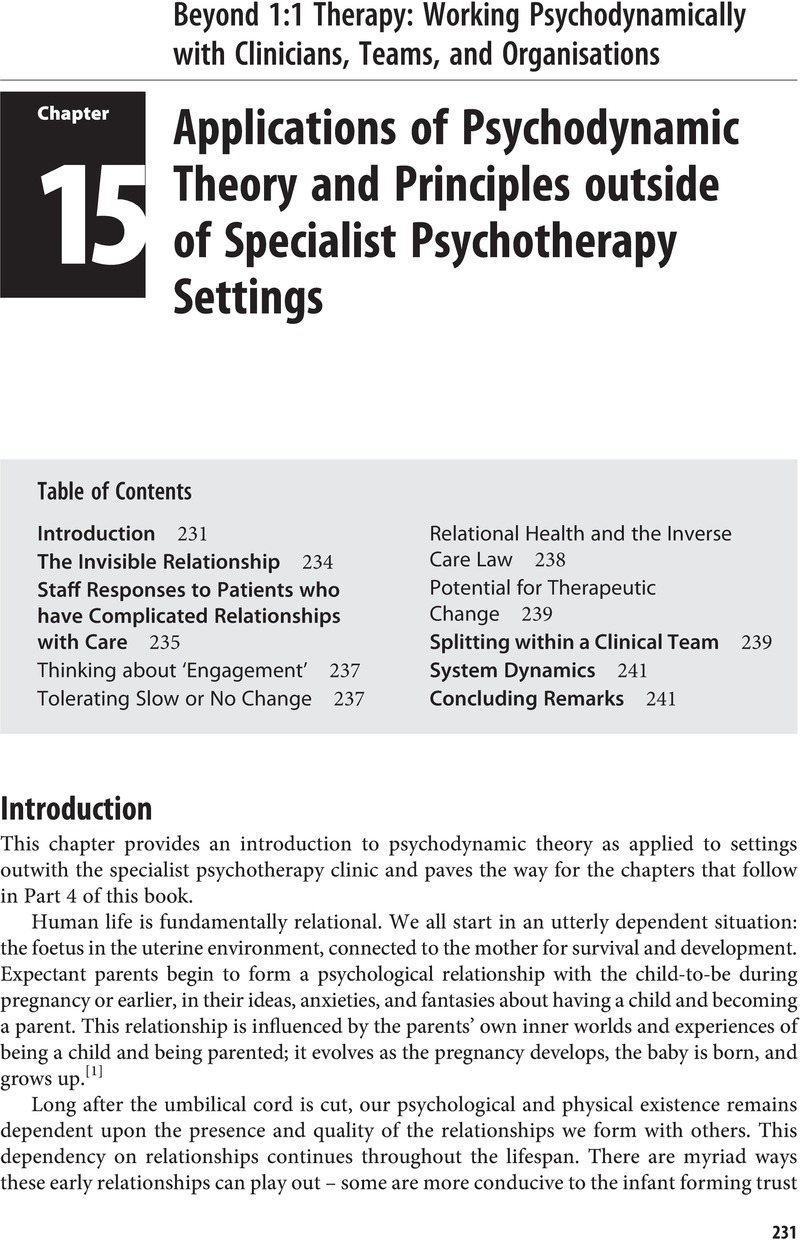Book contents
- Cambridge Guide to Psychodynamic Psychotherapy
- Cambridge Guides to the Psychological Therapies
- Reviews
- Cambridge Guide to Psychodynamic Psychotherapy
- Copyright page
- Dedication
- Contents
- Foreword
- Preface
- A Note from the Series Editor
- Acknowledgements
- Part 1: An Overview of the Model
- Part 2: The Model of Psychodynamic Psychotherapy into Practice
- Part 3: Application for Mental Health Presentations
- Part 4: Application of Psychodynamic Psychotherapy in Different Populations and in Different Settings
- Beyond 1:1 Therapy: Working Psychodynamically with Clinicians, Teams, and Organisations
- Other Forms and Settings of Psychotherapeutic Work
- Glossary of Terms
- Index
- References
Beyond 1:1 Therapy: Working Psychodynamically with Clinicians, Teams, and Organisations
from Part 4: - Application of Psychodynamic Psychotherapy in Different Populations and in Different Settings
Published online by Cambridge University Press: 25 August 2023
- Cambridge Guide to Psychodynamic Psychotherapy
- Cambridge Guides to the Psychological Therapies
- Reviews
- Cambridge Guide to Psychodynamic Psychotherapy
- Copyright page
- Dedication
- Contents
- Foreword
- Preface
- A Note from the Series Editor
- Acknowledgements
- Part 1: An Overview of the Model
- Part 2: The Model of Psychodynamic Psychotherapy into Practice
- Part 3: Application for Mental Health Presentations
- Part 4: Application of Psychodynamic Psychotherapy in Different Populations and in Different Settings
- Beyond 1:1 Therapy: Working Psychodynamically with Clinicians, Teams, and Organisations
- Other Forms and Settings of Psychotherapeutic Work
- Glossary of Terms
- Index
- References
Summary

- Type
- Chapter
- Information
- Cambridge Guide to Psychodynamic Psychotherapy , pp. 231 - 290Publisher: Cambridge University PressPrint publication year: 2023



